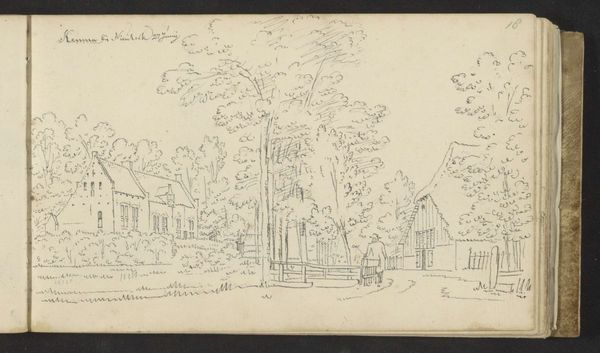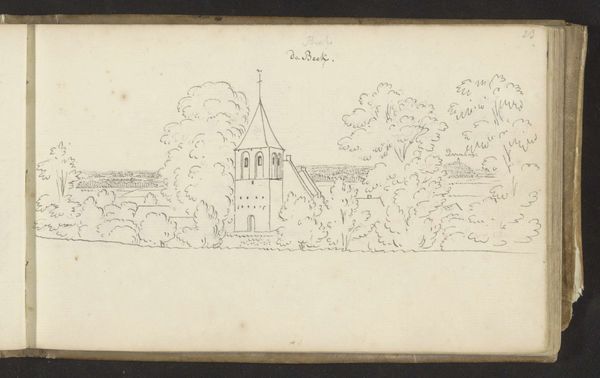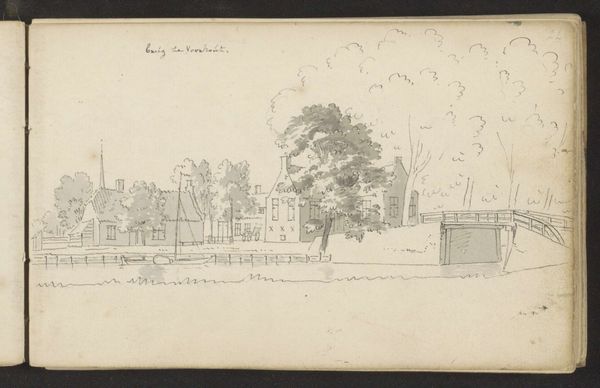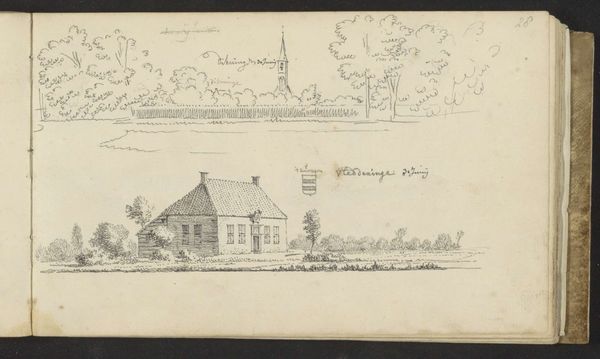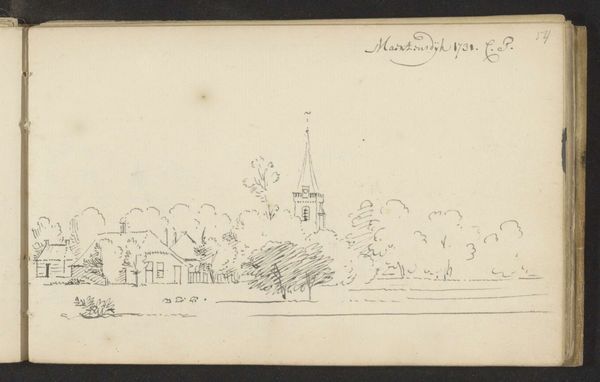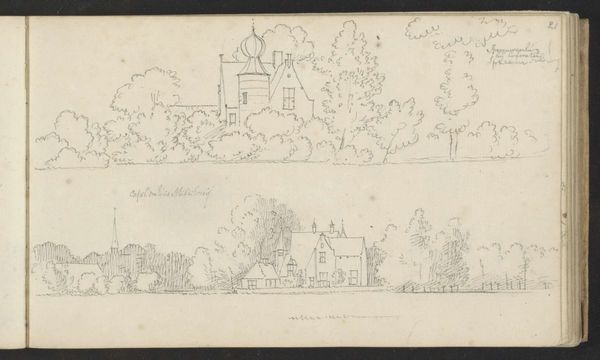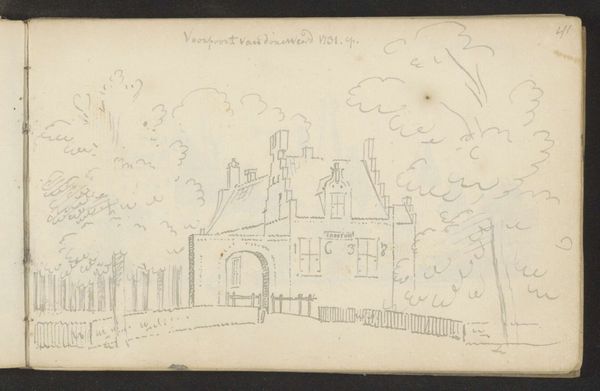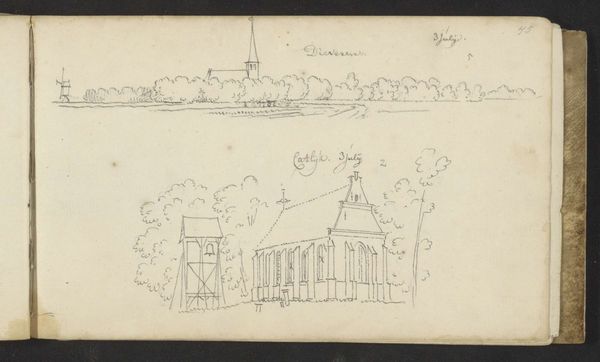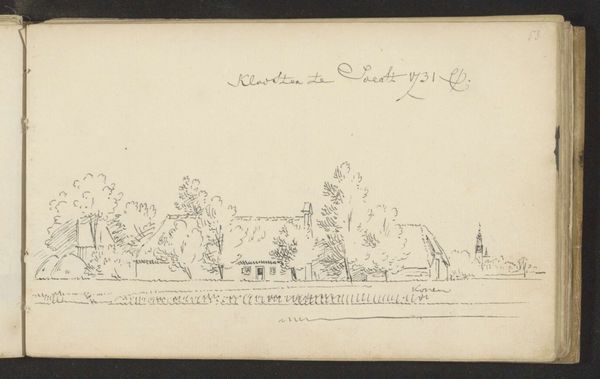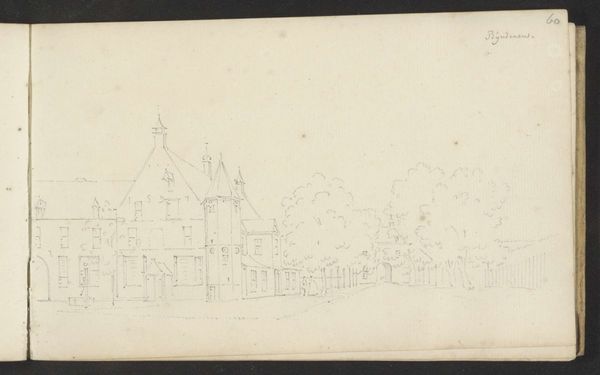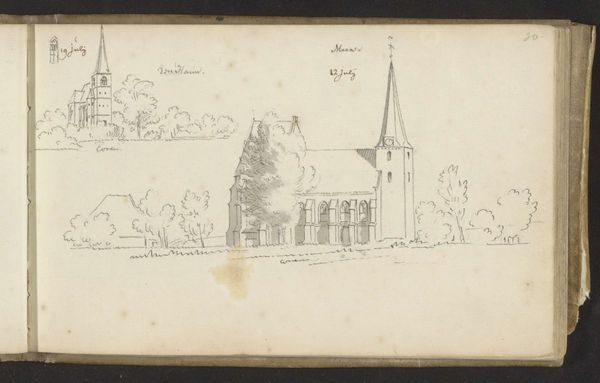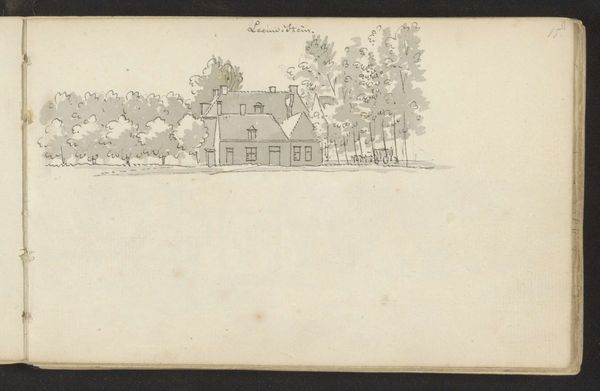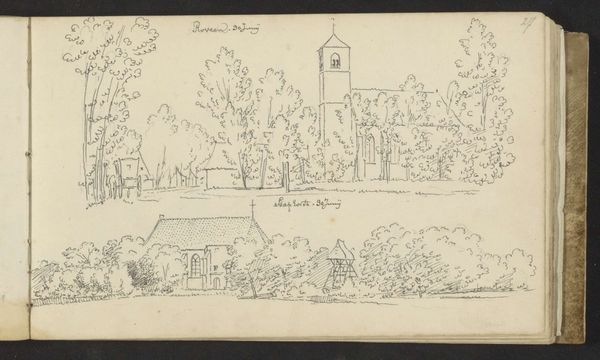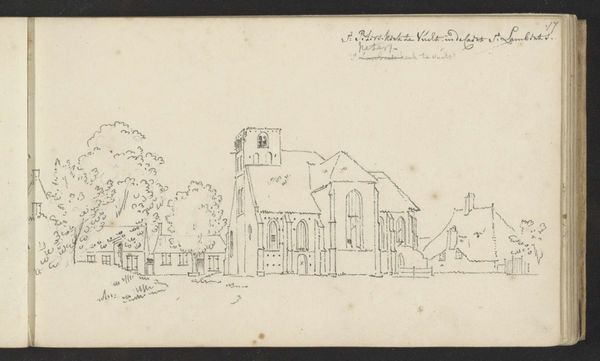
drawing, pencil
#
drawing
#
landscape
#
pencil
#
realism
Copyright: Rijks Museum: Open Domain
Editor: Okay, next up we have “Huis Molenstein te Driebergen-Rijsenburg” from 1731 by Abraham de Haen the second. It’s a delicate pencil drawing. The landscape feels very calm, almost… idyllic. What do you see in this piece? Art Historian: As a materialist, I see more than just an idyllic landscape. I immediately think about the materials: where did de Haen source his pencils? What was the social status of pencil making in 18th-century Netherlands? And who was consuming these images? Was it a form of proto-tourism, or something else? Editor: Proto-tourism? That's interesting. I hadn't considered who the audience would be. It gives it context beyond just being a pretty scene. Art Historian: Exactly! The availability of drawing materials speaks volumes about a burgeoning leisure class with disposable income and time. Think about the labor involved: mining graphite, crafting the pencils, the artist’s training. Each element is embedded with socio-economic meaning. It's more than just technique or representation, isn't it? Editor: Definitely. Thinking about it that way, the simplicity almost feels…deceptive. It hides all of that material complexity. Does that reading diminish the artistic value at all? Art Historian: Not at all! On the contrary, it enriches our understanding. Recognizing the material and economic underpinnings reveals the work as a product of its time, a snapshot of a specific social reality. Editor: Wow, I never would have thought about it like that! Now I see how much the materials themselves can tell us about the culture that produced the artwork. Art Historian: Indeed. Now you can begin to question if landscape drawing could reflect cultural shifts and commercial transactions in 18th century Netherlands.
Comments
No comments
Be the first to comment and join the conversation on the ultimate creative platform.
